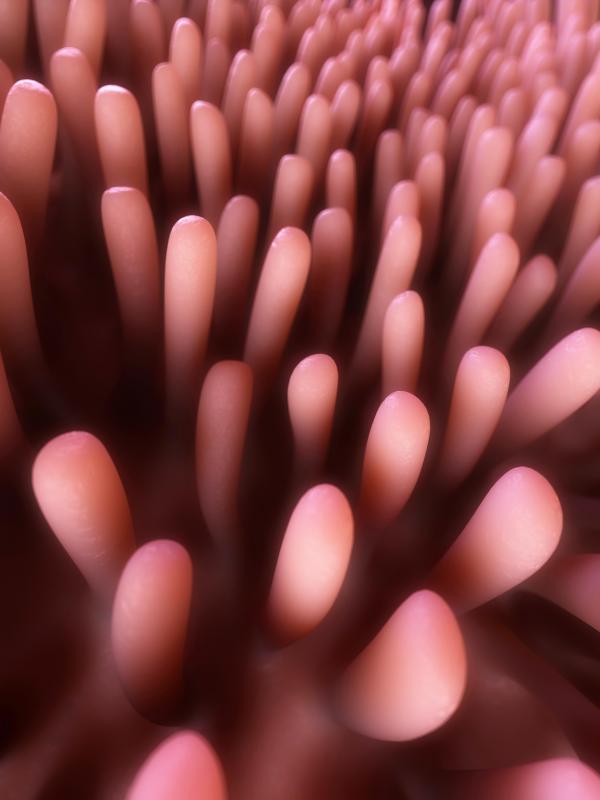At TheHealthBoard, we're committed to delivering accurate, trustworthy information. Our expert-authored content is rigorously fact-checked and sourced from credible authorities. Discover how we uphold the highest standards in providing you with reliable knowledge.
What are Villi?
Villi, the singular of which is villus, are finger-like projections in the small intestine that help absorb food more efficiently in the body. The small intestine is an organ in the body in which most digestion occurs. Food entering into the body is liquefied and partially digested in the stomach. It then passes into the small intestine. The villi are the parts that absorb nutrients from food and pass them into the bloodstream.
Villi are also covered with microvilli. The purpose of both structures is to increase the small intestine’s surface area so that nutrient absorption is enhanced. Villi increase the surface area where substances are able to be absorbed in the small intestine 30-fold while microvilli increase it 60-fold. This increases the efficiency of nutrient absorption. Each villus is also coated in enzymes that aid digestion.

Amino acids and nutrients found in food are absorbed by villus capillaries via a process called diffusion. Diffusion refers to the moving of substances moving from high concentration to low concentration until the two concentrations are equal. Therefore, if there are more nutrients in the small intestine than in the blood stream, the nutrients will move from the small intestine through the villi and into the blood stream. This is how your body is able to gather the nutrients from your food. These structures are also able to trap larger pieces of food and hold onto them until they can be digested by the enzymes coating them.

The villus lacteals are the parts in villi that absorb the fatty acids in your food. These fats are then reconstructed into triglycerides and combined with cholesterol and amphipathic proteins to produce chylomicrons that are then taken through lymph fluids. It is these chylomicrons that enable fatty substances like lipids to be transported around your body. This process is necessary because blood is mostly water-based. Without chylomicrons, these important substances would not be able to travel through your blood stream.

There are certain diseases that can damage villi and render them unable to absorb the nutrients your body needs. One of these is Celiac disease. A person with this disease will produce antibodies in response to ingested gluten, a protein found in wheat flour. These antibodies can attack the lining of the small intestine which can then lead to the damage. With damaged villi, a person may not be able to absorb nutrients in their body and malnutrition can result.
AS FEATURED ON:
AS FEATURED ON:















Discussion Comments
To answer that question, if the intestine is smooth without villus, you won't have smooth, just less surface area for absorption of food nutrients which will lead to a lack of nutrients for growth. Other than that, nutrients are being delivered slower around the body to the cells.
Just what I needed. I'm doing a biology project.
Great article. Anytime you eat gluten, the body suffers - sensitivity or not. While the body is fighting to get rid of the gluten, it isn't absorbing the nutrients from food you are eating. So you could be eating well but the body isn't taking in the vitamins/minerals. It's only a matter of time until some form of disease will occur in the body.
To the anon above. The villi increase the surface area of the intestinal wall. With the increased surface area the glucose and other nutrients going through the system can be quickly absorbed through into the blood stream. Without the villi the or with a smooth lining, the surface area is enormously lowered, thus reducing the speed of absorption to a level which humans really wouldn't be able to live with.
i really want to know what happens if villi are destroyed. Thanks a lot for that information.
What would happen if the intestine was smooth rather than covered with villi?
thanks, this really helped. Really did.
Post your comments